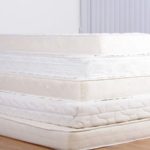Polyamide fabric has several advantages over natural fibers such as cotton or linen, the most notable being its affordable price. This type of fabric has many practical applications in the production of affordable clothing and accessories. In this article, we will provide detailed information about the characteristics, applications, and care instructions for polyamide fabric products.
1 What is Polyamide Fabric?
Polyamide fabric is a general term used to describe various fabrics made from polyamide molecular chains. The market offers different types of fabrics made from polyamide fibers, including organic polyamide fabric, capron, and aramids, but the most popular is nylon.
 What is polyamide fabric?
What is polyamide fabric?
Characteristics
- Polyamide fabric has a soft and smooth surface. It is not waterproof but has low air permeability and is prone to damage. When blended with other fabrics like cotton, linen, or silk, polyamide fabric becomes soft, smooth, and more elastic.
Advantages and Disadvantages
- Polyamide fabric has a soft, smooth, and non-waterproof surface, making it highly antibacterial and resistant to mold growth. It provides a comfortable feeling for the wearer and has high friction resistance, protecting the feet and keeping them dry during physical activities. Polyamide is also easy to dye, absorbs many colors, and does not wrinkle.
- Despite its advantages, polyamide fabric has some limitations. It has poor heat resistance and light resistance and should not be machine-washed at high temperatures. Additionally, it is not environmentally friendly as it does not biodegrade, leading to pollution.
 Characteristics of polyamide fabric
Characteristics of polyamide fabric
2 Applications of Polyamide Fabric
In the garment industry:
- Polyamide is widely used in the garment industry. Its good stretchability, easy washing, and quick drying make it an ideal material for sportswear, yoga clothing, and underwear. It is often blended with polyester to enhance breathability and water resistance.
- Polyamide fabric’s wrinkle resistance and water repellency make it suitable for producing raincoats, waterproof jackets, and thin tights for women that help shape attractive legs.
 Applications of polyamide fabric in the garment industry
Applications of polyamide fabric in the garment industry
In other fields:
- Apart from the garment industry, polyamide fabric’s durability and toughness make it suitable for various applications. It is used in the production of ropes, umbrellas, fishing nets, curtains, decorative pillow covers, bath towels, and more. It can also be blended with wool to enhance durability.
 Applications of polyamide fabric in other fields
Applications of polyamide fabric in other fields
3 How to Care for Polyamide Fabric Items
- Clothes and items made of polyamide should be hand-washed gently and not machine-washed to maintain their quality and longevity.
- During the cleaning process, only rub gently and avoid vigorous scrubbing.
- Use mild and neutral detergents. Avoid using strong detergents with a high pH, as they can reduce fabric quality.
- Hang clothes in a cool, shaded place. Do not expose them to direct sunlight, as it can cause the fabric to yellow, melt, or shrink.
 How to care for items made of polyamide fabric
How to care for items made of polyamide fabric
We hope that this article has provided you with valuable information about the characteristics, applications, and care of polyamide fabric. Thank you for reading!
Investigating the Advantages and Disadvantages of a Firm Cotton Mattress
If you’re searching for comfort and support during sleep, then cotton stuffed mattresses may be the perfect option for you! Learn more about these mattresses and their unique characteristics, along with their advantages and disadvantages. All cotton stuffed mattresses are made from 100% polyester, making them increasingly popular with sleepers today.







































